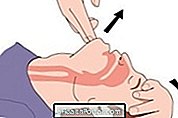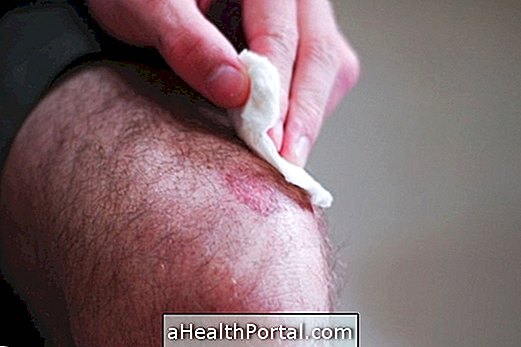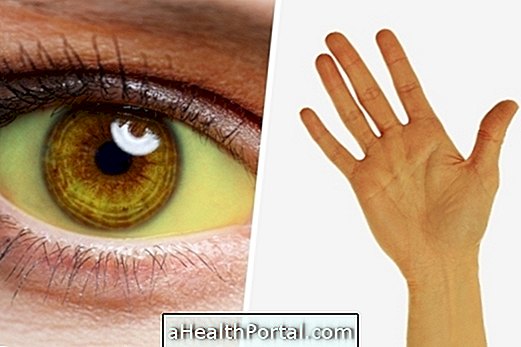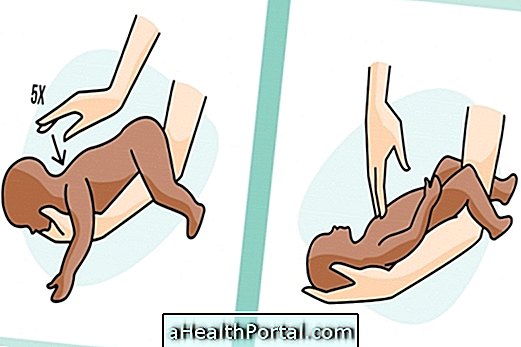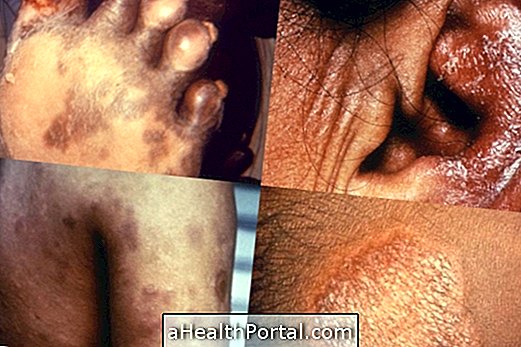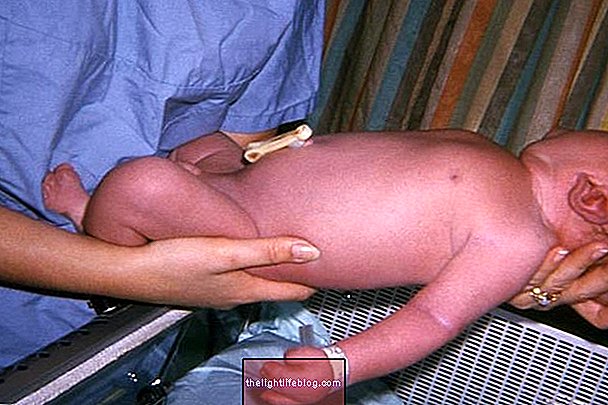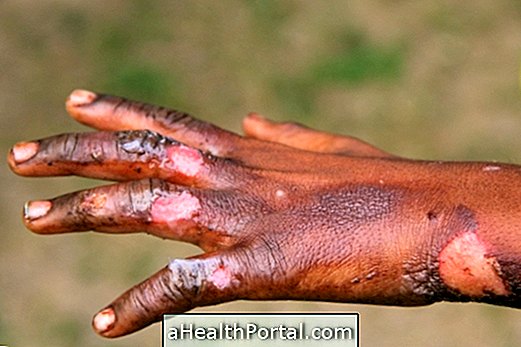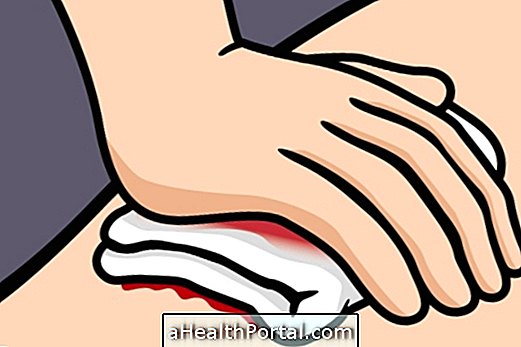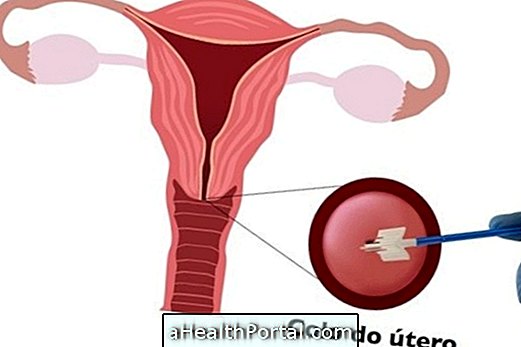Spiders can be poisonous and pose a real danger to health, especially black and brown, which are usually the most dangerous.
What you should do, if you are bitten by a spider, consists of:
- Wash the site of the bite with soap and water;
- Raise the member where the sting is, as shown in figure 1;
- Do not tie or tighten the location of the bite, as shown in figure 2;
- Do not suck the venom from the sting;
- Put warm compresses or a wet cloth with hot water at the site of the bite to relieve the pain;
- Immediately go to the hospital to start the appropriate treatment.
If possible bring the spider, even if dead, to the hospital to help doctors better identify the type of spider that made the bite, facilitating treatment and accelerating recovery.
1. Brown spider bite
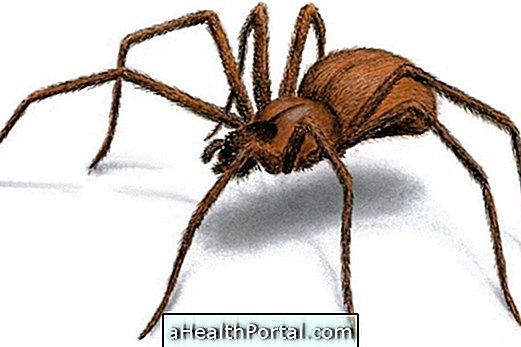
The bites caused by this type of spider are more frequent in the South and Southeast regions of Brazil, such as São Paulo, Paraná or Rio Grande do Sul. The brown spider is a small type of spider that can reach 3 cm in length and its body is greyish brown in color.
Where they are: they are more active at night, and so during the day they hide in dark places like roots, bark of trees, behind furniture, in garages, abandoned boxes or bricks, for example.
Symptoms of the bite: initially it does not feel the sting of the spider, but until 24 hours arises a pain that is increasing in the region of the bite. This region may still turn red and develop blisters or swelling. After 5 days it is common to see a black skin on the skin that falls, 2 to 3 weeks later, leaving a wound that should be treated in the hospital.
Special care: you should keep the area always dry and avoid doing physical activity as it can help spread the venom through the body.
Treatment for brown spider bite
Treatment should be done at the hospital with the injection of serum to the venom of the brown spider. In some cases, especially when more than 24 hours have passed, your doctor may not advise you to use the serum because the effect may not outweigh the risks.
In addition, the spike caused by the spider bite should be removed through surgery to facilitate healing and site treatments should be done by a nurse in the hospital. In the more severe cases, where the bite has affected a very large region, it may still be necessary to have a repairing surgery of the place.
2. Spider-billed armadillo

These bites are frequent throughout the Brazilian territory, since it is possible to find this spider throughout South America. However, there is a greater number of cases during the months of March and April in the Southeast of the country, since they are periods in which the armadillo spider is more active.
The armadillo spider is usually a large spider that can reach 15 cm in length and its body is brownish or yellowish brown. This type of spider is known to adopt a position of defense that consists of leaning on the last two pairs of legs, raising the head and the front legs. They can also jump toward your enemy, up to 40 cm away.
Where they are found: they can be found in dark and humid places such as tree barks, fallen logs, banana trees, in shoes, behind furniture or curtains, for example.
Symptoms of the bite: intense pain arises soon after the bite, accompanied by marks, swelling and redness at the site of the bite. In addition, there may be increased heart rate, excessive sweating, vomiting, diarrhea, agitation, and increased blood pressure.
Treatment for spider bite armadeira
The treatment should be done at the hospital with the injection of anesthetics at the site of the bite to help reduce the pain that ends up disappearing up to 3 hours after the accident. Only in cases of more severe symptoms, such as decreased heart rate or shortness of breath, is it necessary to treat with serum for venom of this spider.
3. Black Widow Chop

This type of spider is more common in the region with the sea, especially near abandoned beaches, but the stings can happen all over Brazil, since the black widow is distributed by tropical and temperate regions.
The black widow is a small spider, about 2 cm long, with long thin legs and a black body with a spot on the belly, usually red. Although this spider does not attack, it can sting when it is pressed against the body.
Where they are: They stay in damp, dark places and so can be in places like shrubs, tires, empty cans, shoes and lawns, for example.
Symptoms of the bite: start with a sharp pain at the site of the bite, as if it had a pin pricking, and after 15 minutes the pain turns into a burning sensation that worsens for 48 hours. Symptoms such as nausea, vomiting, muscle aches, and increased body temperature are also common.
Treatment for black widow sting
Treatment should be started at the hospital as soon as possible with the injection of serum specific for venom spider. Symptoms usually improve up to 3 hours after starting treatment, but the patient should be hospitalized for 24 hours to see if symptoms recur.
Knowing what to do in such situations is important to save a life. So learn what to do in case of stinging by other animals like snake or bee.
